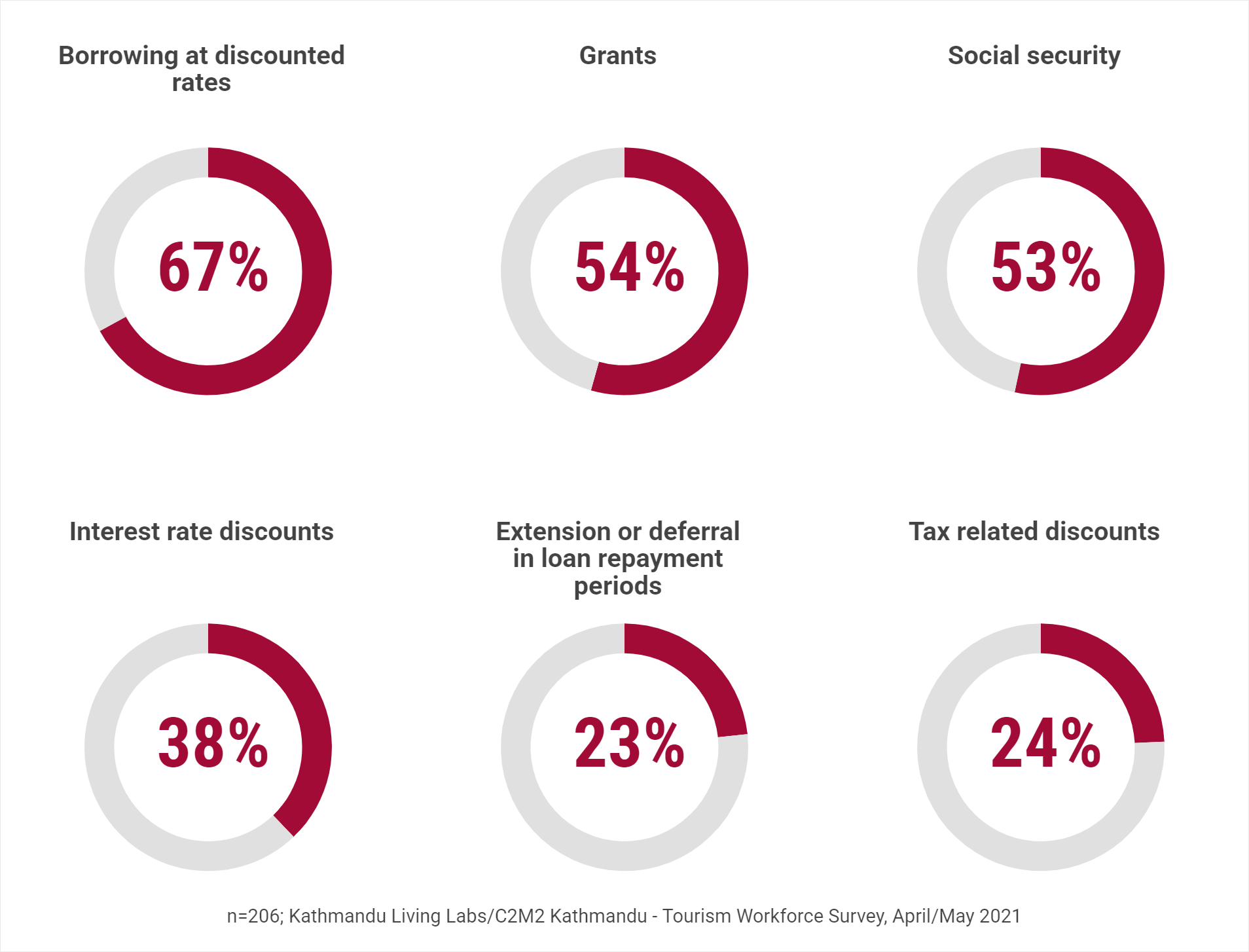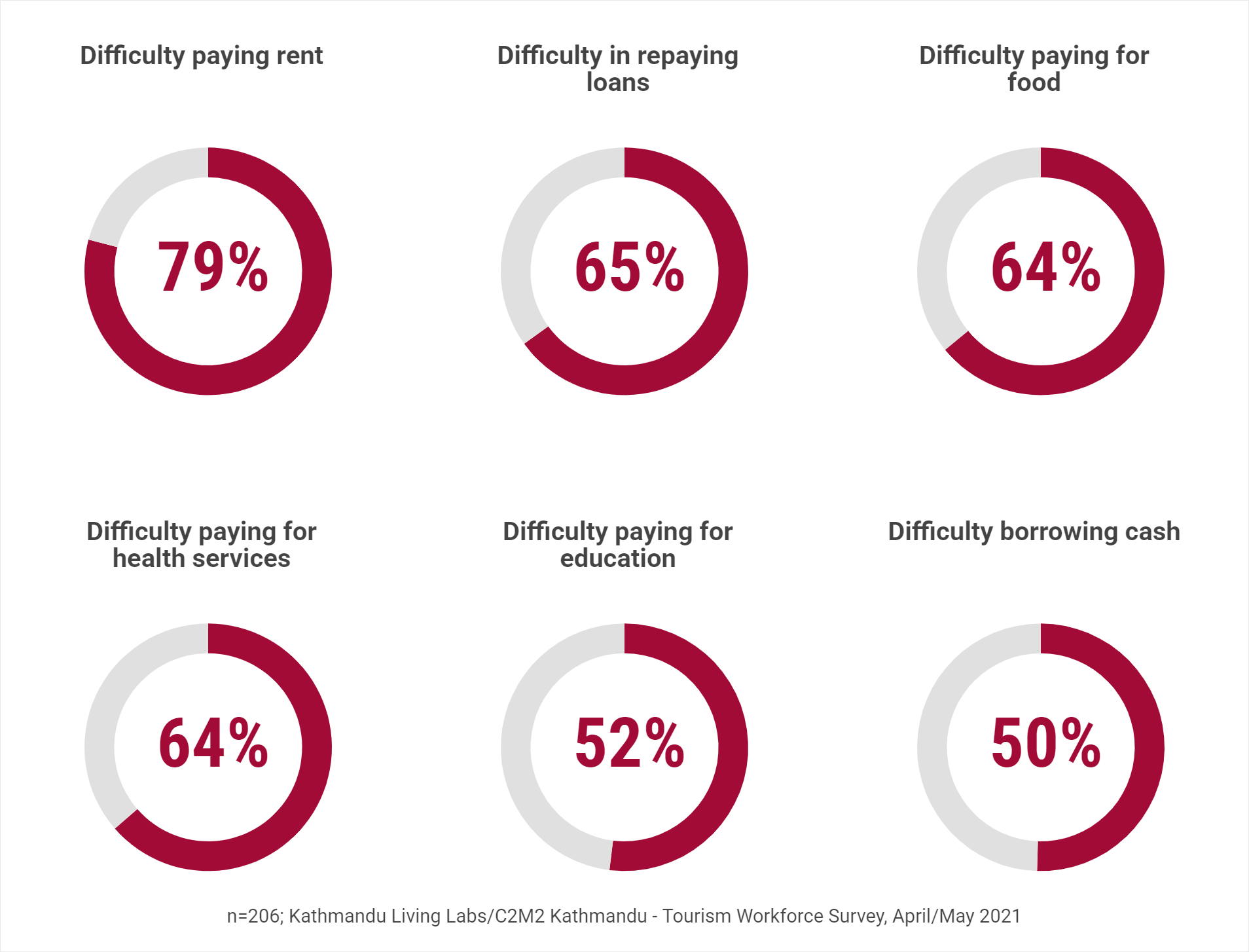Our ongoing survey for members of the Nepali tourism workforce provides useful insight into their immediate financial needs.
We asked survey participants about the kinds of financial support they would need to deal with the pandemic and its effects. Participants were provided a set of options to choose from. Multiple selections were allowed. Here’s how they responded.

Respondents could select more than one answer for this question. Each pie chart represents the percentage of respondents that choose a given option.
If we look at the most popular answers, we can see that there is a need for direct monetary support, either through “grants” or “discounted borrowing”. “Social security” comes next, although to what extent the government can introduce such forms of financial support in an industry that has a lot of informal employment, is a question difficult to answer. Relatively fewer respondents seem to prioritize support that could potentially help with their existing debt, things like “interest rate reductions” or “loan period extensions”.
WHERE DOES THE NEED FOR MONETARY SUPPORT COME FROM?
65% of our respondents report having no employment at present. 95% have some form of debt. Among the remaining 35% who managed to find work, nearly two-thirds report having to work at reduced incomesReview workforce survey facts and figures here. . The pandemic, as we can expect, has had a severe toll on the income of the Nepali tourism workforce.
At the same time, more than 90% of our respondents report losing at least three quarters of their savings during the pandemic. Almost one out every two workers reported having zero savings.

Unsurprisingly, what our survey reveals about immediate concerns of the individuals working in Nepali tourism industry paints a grim picture of what the future holds for them. Chart below shows responses for another multiple-selection question. This time, respondents were asked about the kind of challenges they are likely to face in the next six months.

Respondents could select more than one answer for this question. Each pie chart represents the percentage of respondents that choose a given option.
What is most disconcerting, is learning that not being able to afford a roof to live in, or buying food to survive is the grim reality in which most of our tourism workforce is currently living in.
The financial capital of Nepal’s tourism workers is rapidly depleting. With reduced savings, few options for borrowing, and increasing debt, the situation of most our respondents, many of whom have devoted almost their entire lives to tourism, hangs in the balance.
WHAT MEASURES CAN BE TAKEN?
This section lists some of our recommendations, based on our interpretation of survey results.
MAKING BORROWING EASIER
Our in-person interviews revealed that workers shy away from borrowing though financial institutions because they lack sufficient property, real-estate, or other assets that can be provided as collateral.
Even though the government has made provisions for tourism workers to borrow money through formal sources, our survey reveals that such a practice hasn’t been fully adopted by the workforce. As the chart below shows, a lot of borrowing still happens informally through friends and family.

It appears that despite having the best intentions, past efforts of encouraging borrowing through financial institutions do not seem to be working as expected. This represents an opportunity for further work, as finding ways to increase financial access can be crucial- in supporting the revival and recovery of the thousands of people working in Nepal’s tourism sector.